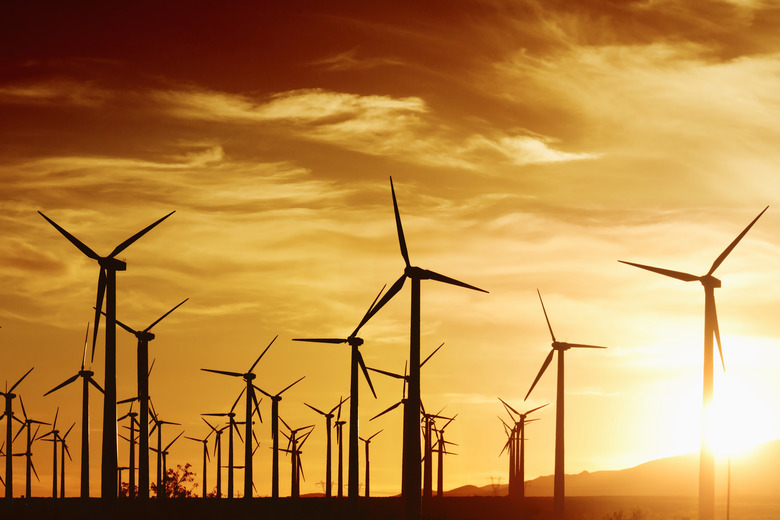We're Going To Miss Our Temperature Goals: Here's What It Means For You
If the Federal government's decision to withdraw from the Paris Climate Accord still has you down, we're afraid we've got bad news. Not only is the world on track to miss the agreement's goal to limit global warming to 1.5 degrees Celsius (or about 3 degrees Fahrenheit), but new research indicates it might be a big miss. The Climate Science Special Report, prepared by the U.S. government, reports that climate change is extremely likely to be a result of human activity, and that we might be on track to increase temperatures a staggering 9 degrees F or more over preindustrial times by the end of the century. No matter where you live in the world, you'll be affected by this change. But where you live in the the United States determines exactly what might happen.
The Northeast
If you're located in the Northeast – states including New York, Maine, Vermont and Pennsylvania – prepare for rainy days ahead. In addition to rising temps, states in the northeast will experience heavy rainfall as the climate changes. Sea level changes also pose a major threat, particularly to vulnerable regions like New York City, and heat waves during humid summers can translate to massive heat stress. You'll be tempted to crank the A.C. to stay safe.
The Southeast
From Florida to Virginia, climate change means summers are about to get hot. While these states are no strangers to steamy weather, climate change is likely to increase the temperatures by up to 8 degrees F, meaning heat waves will increase and get more intense. Rising sea levels also threaten to submerge several major metropolitan regions, including economic centers like Miami, and the whole region will experience increased hurricane activity.
The Midwest
Head west and you're looking at more rain. Some regions in the Midwest have already seen a huge increase in precipitation, and more heavy downpours in winter and spring as the climate continues to change can mean heavy flooding. Climate change also increases the levels of allergens and air pollution – and because the Midwest already suffers from lower air quality, that will increase allergies and other health issues, like asthma. As the region continues to heat up, crops in the Midwest might offer lower yields due to stress, which could potentially lead to food shortages.
The Southwest
California is already facing wildfires and droughts, and these unpleasant phenomena are likely to get worse across the region with climate change. Wildfires can displace animals and people en masse, dramatically changing the local ecosystem overnight. Droughts are also devastating for local agriculture, and severe droughts could even limit access to drinking water, especially as snowpack amounts drop.
The Great Plains
Climate change also threatens America's bread basket, and crop stress is a major concern throughout the great plains. Changes in temperature mean farmers need to adapt to new patterns of crop growth – hopefully, with success – while droughts and changes in precipitation further impact crop growth. The southern plains, already a warm region, will see intense heat waves, which can pose a health risk, especially for vulnerable populations like the elderly.
How Can You Help?
If climate news gets you down, we're with you, but challenging problems isn't impossible. Addressing climate change starts in your neighborhood. In addition to following the three Rs (reduce, reuse, recycle) at home, start organizing for eco-friendly changes in your region. Challenging your local representatives to invest in green initiatives, like investing in green space and tree planting, and supporting local green businesses, can create a model that other cities, states and even the federal government could build on.
And, of course, calling or writing your state and federal representatives always helps. You can find your representative here and let them know why combating climate change is important to you.
References
- Eos: How Will Climate Change Affect the United States in Decades to Come?
- Environmental Protection Agency: Climate Impacts in the Northeast
- Environmental Protection Agency: Climate Impacts in the Southeast
- Environmental Protection Agency: Climate Impacts in the Southwest
- Environmental Protection Agency: Climate Impacts in the Midwest
- Environmental Protection Agency: Climate Impacts in the Great Plains
Cite This Article
MLA
Tremblay, Sylvie. "We're Going To Miss Our Temperature Goals: Here's What It Means For You" sciencing.com, https://www.sciencing.com/were-going-to-miss-our-temperature-goals-heres-what-it-means-for-you-13710349/. 16 March 2018.
APA
Tremblay, Sylvie. (2018, March 16). We're Going To Miss Our Temperature Goals: Here's What It Means For You. sciencing.com. Retrieved from https://www.sciencing.com/were-going-to-miss-our-temperature-goals-heres-what-it-means-for-you-13710349/
Chicago
Tremblay, Sylvie. We're Going To Miss Our Temperature Goals: Here's What It Means For You last modified March 24, 2022. https://www.sciencing.com/were-going-to-miss-our-temperature-goals-heres-what-it-means-for-you-13710349/
